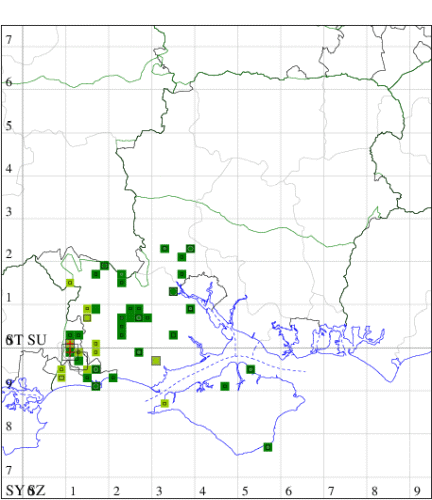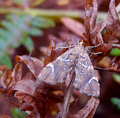Musotima nitidalis
Checklist Number63.119 [B&F: 1355a]
Verification
Record will be accepted (subject to date and location checks)
Classification
| Family: | Crambidae |
| Subfamily: | Musotiminae |
| Genus: | Musotima |
| Species: | nitidalis |
| Authority: | (Walker, [1866]) |
First trapped at Merritown Heath, Dorset on 11 August 2009 by Mike Jeffes and David Evans, and identified at the BENHS Exhibition that year by Martin Honey (BMNH) as the present species, a native of New Zealand which feeds on various fern species. Certainly introduced by the horticultural trade, since 2013 it has since spread widely from the original location across southern England, but also as far as East and West Sussex, and Harlow in Essex. It reached the Isle of Wight in October 2015 (interestingly, this came before it was seen in Hampshire 'proper', when one was found in Sandleheath, New Forest in November 2016; there were no further Wight records until 2022). By 2021 it was reported as abundant in places in the New Forest around bracken, and reached as far east as Fareham in 2023, this year also seeing the first North Hampshire with one in Andover in October.
Unmistakable. The food plant in the British Isles appears to be principally Bracken.


The abundance in each month is indicated as follows:
 No records
No records Very occasional
Very occasional Irregular
Irregular Uncommon
Uncommon Off-peak, but not unusual
Off-peak, but not unusual Off-peak, but not unusual
Off-peak, but not unusual Main flight time
Main flight time| J | F | M | A | M | J | J | A | S | O | N | D | |
|---|---|---|---|---|---|---|---|---|---|---|---|---|
| Adult |  |  |  |  |  |  |  |  |  |  |  |  |
| Larval |  |  |  |  |  |  |  |  |  |  |  |  |


